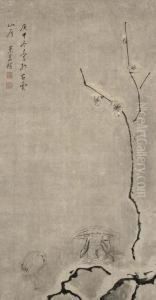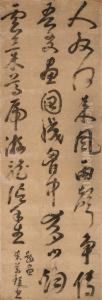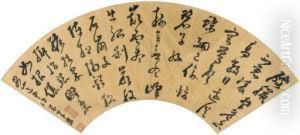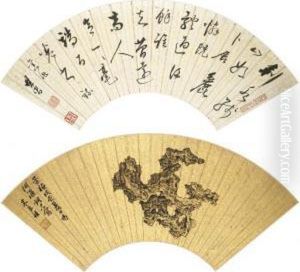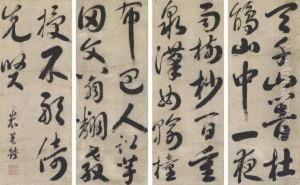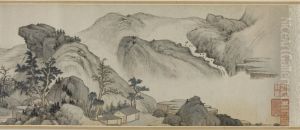Mi Wanzhong Paintings
Mi Wanzhong, also known as Mi Wending, was a Chinese landscape painter during the Ming Dynasty, born in 1570 and passed away in 1628. He was born into a scholarly family in Xiuning, Anhui Province, which is part of the region historically known for contributing to the Anhui or Xin'an school of painting. His work is characterized by a strong personal style that infused traditional Chinese landscape painting with a sense of individual emotion and expression.
Mi Wanzhong's painting style was influenced by earlier masters such as Dong Qichang, and he was particularly known for his 'baimiao' (literally 'plain drawing') ink paintings, which emphasized the use of fine lines and avoided the use of color. His landscapes often feature delicate brushwork and an emphasis on the rhythmic flow of lines, creating a sense of movement and vitality within the stillness of nature.
Throughout his career, Mi Wanzhong struggled with the political and social upheavals of the late Ming period, which is reflected in the contemplative and often melancholic mood of his works. Despite his personal hardships, his paintings were highly esteemed by his contemporaries and have been regarded as exemplars of literati painting, a style associated with the educated scholar-official class who painted for self-expression and cultivation rather than for commercial purposes.
His works are now considered part of the classical canon of Chinese landscape painting and continue to be studied and revered for their unique contribution to the development of the literati aesthetic. Mi Wanzhong's paintings are held in various museum collections and have been the subject of scholarly research, illustrating the enduring legacy of his artistic vision.
